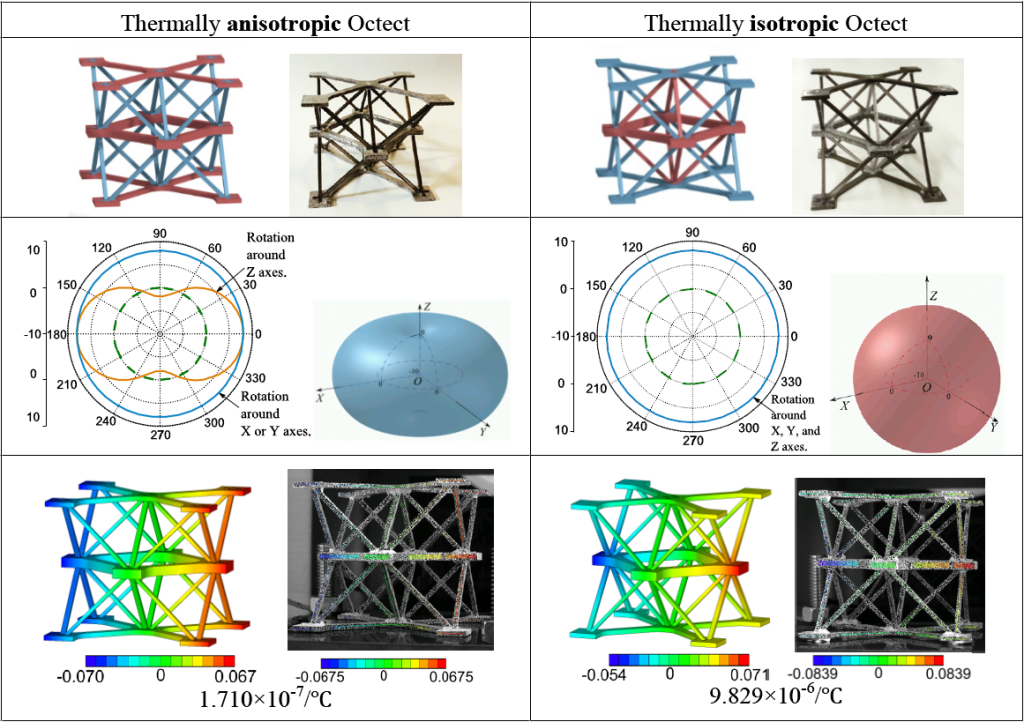Description
Systems in space are vulnerable to large temperature changes when travelling into and out of the Earth’s shadow. Variations in temperature can lead to undesired geometry deformation in sensitive applications requiring very fine precision, such as sub-reflector supporting struts. To suppress temperature induced failures, materials with a low coefficient of thermal expansion (CTE) are generally sought over a wide range of temperatures. Besides low CTE, desirable stiffness, strength and extraordinarily low mass are other mechanical properties critical to guarantee. This work proposes a systematic strategy based on tetrahedron tessellation to develop a class of bi-material lattices with tunable CTE, low mass, besides high stiffness and strength. Other physical properties are also currently studied to provide lattices with multifunctionality.
Relevant Publications
Xu H, Farag A, Pasini D, Routes to program thermal expansion in three-dimensional lattice metamaterials built from tetrahedral building blocks, Journal of the Mechanics and Physics of Solids, Vol. 117, pp. 54-87, 2018.
Xu H, Farag A, Pasini D, Multilevel hierarchy in bi-material lattices with high specific stiffness and unbounded thermal expansion, Acta Materialia, Vol 134, pp. 155 – 166, 2017
Xu H, Pasini D, Structurally Efficient Three-dimensional Metamaterials with Controllable Thermal Expansion, Scientific Reports, 6: 34924, 2016
